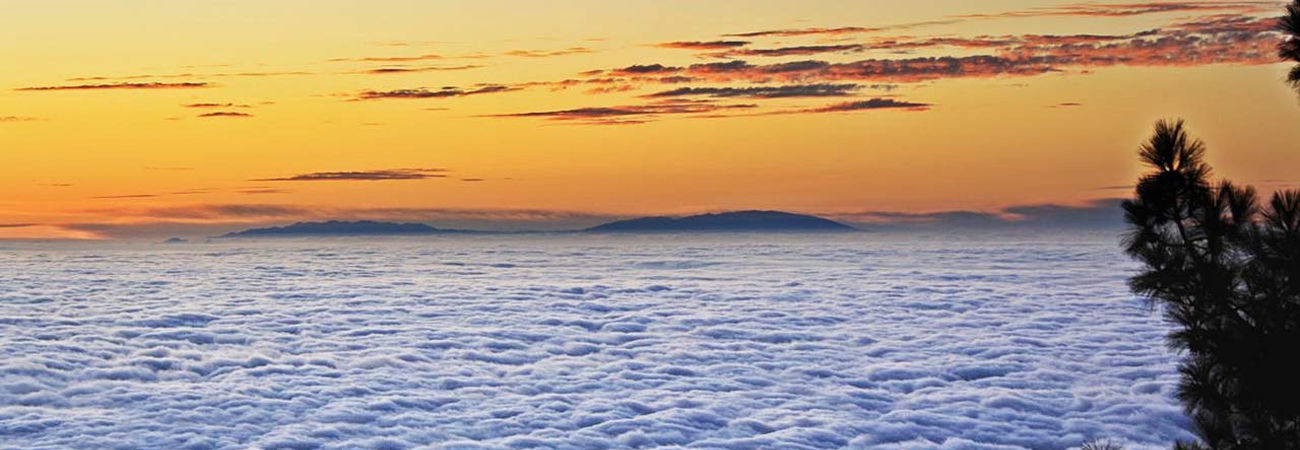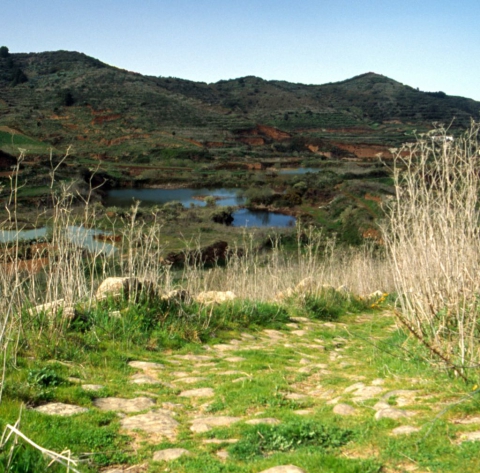Water: Resources and Consumption
Water is a real gift for life on the island. The islanders of Tenerife have learned to use all their ingenuity and with an admirable effort, have managed to harness the waters that the earth manages to trap in its porous and basaltic structure. Due to the volcanic nature of the island, with generally porous and permeable ground, most of the rainwater filters down into the sub-soil, along with a significant amount of water from condensation in the areas of forest, and from the thaw in the highland zones of the island. So, apart from the geological formations that hold water within them, there is also water that accumulates in dikes, impermeable formations that do not allow the water to filter through them, creating small pockets of water. However, geological conditions and irregular rainfall mean that a generalised system of reservoirs and damns would not be advisable, which is why most of our water comes from galleries and wells, forms of extracting water from the water table, or the part of the sub-soil where it accumulates. Well aware of the limited water resources available, the Cabildo of Tenerife implanted the Island Hydrological Plan, in force since February 1997, to analyse water consumption by sectors and study ways of increasing water flow and production. According to the Island Water Board, subterranean waters continue to be the Island´s main source, accounting for over 80% of total available resources (197 hm3 in the year 2004, of a total of 226 hm3). But, the Cabildo faces two significant problems with subterranean waters: over-exploitation and deteriorating quality. Consumption has stabilised. Despite the fact that there has been a downward trend in recent years, agriculture remains the leading water consumer, accounting for almost 50%. The water supply needs of both the regular population and the tourist population, on the other hand, have increased. The current demand and consumption situation has created a need for new sources of supply, including the re-use of treated waters and desalination, both of which are highly interesting because of production capacity. There is also a need for systematically correcting the quality of the water, and to carry out improvements in the grid, in order to prevent leaks and losses. O.A.L. Tenerife Island CabildoWater
The island now has over one thousand galleries dug into the mountains, covering over 1,700 kilometres. There are also some 500 wells, each of which is on average, 120 metres deep. Over 80% of the water that is consumed on the island comes from these natural reservoirs.
Tenerife has a series of reservoirs (all together, they provide a capacity of about 13 cubic hectometres). The water is then distributed via a complex network of over 4,000 kilometres of channels and pipe lines.Island Hydrological Plan. Resources and consumption
The first salt water desalination plant (EDAM) came on line in July 1998, in the south of the island, producing 10,000 m3 per day in the initial phase, and which has now reached a production of 20,000 m3 a day. There is another desalination plant in Santa Cruz, which will have a final capacity of 40,000 m3 a day. The island also has waste water treatment plants (EDAR) that enables treated water to be re-used for different types of consumption. On the other hand, Tenerife also has plants that improve the quality of the subterranean waters by reducing the excessive mineral and salt content caused by over-exploiting the water table. The demineralisation plants (de-fluoridation plants) reduce the mineral content, and brackish water desalination plants reduce the salt content.Tenerife Island Water Board
C/Leoncio Rodríguez, 7 - Edif. El Cabo 2ª planta
Santa Cruz de Tenerife
Tel. 922 20 88 00








